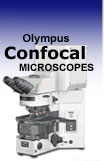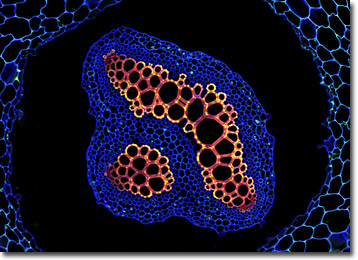 |
 |
 |
|
||||||||||||||||||||||||
 | ||||||||||||||||||||||||
 | ||||||||||||||||||||||||
 | ||||||||||||||||||||||||
Confocal Microscopy Image Gallery
Plant Tissue Autofluorescence Gallery
Selaginella Stem
Selaginella is a large genus of plants commonly known as clubmosses or spike mosses that are widely distributed around the globe. Approximately 600 species of Selaginella have been identified, which exhibit notable variation in their structure, appearance, and preferred habitat.

Some of the vascular plants appear similar to ferns and proliferate predominantly in the tropics, whereas others display simple scale-like leaves and creep across the ground like mosses. Several species of Selaginella are especially adapted for arid conditions. Often referred to as resurrection plants, these species curl up into what appears to be a lifeless ball of material when dry, but unfold into a much more vibrant, leafy form when exposed to water. Dried resurrection plants are often marketed as novelty items.
The stems of most Selaginella plants are highly branched and the leaves they exhibit are typically spirally arranged. Though the stems of many species are horizontal to the ground, they usually are suspended an inch or two over the earth on rhizomorphs, small, root-like bundles. The leaves of the plants each contain a single chloroplast and feature a strap-like structure termed a ligule near the base. Spore-bearing leaves on their branches are organized into strobili.
Contributing Authors
Nathan S. Claxton, Shannon H. Neaves, and Michael W. Davidson - National High Magnetic Field Laboratory, 1800 East Paul Dirac Dr., The Florida State University, Tallahassee, Florida, 32310.
